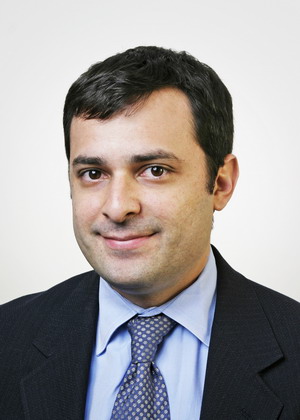Introduction
The U.S. Supreme Court's decision in Bilski ensures that the door to patenting business method inventions remains open in America. This ends speculation that the Court's finding would render all similarly situated business model applications categorically vulnerable to a denial of patent protection as an invention. The Bilski ruling is good news for clean energy innovators in Asia. It helps ensure that the U.S. patent protection system stays robust. This will spur innovation and attract investment capital needed for research, development, and commercialization of clean energy technologies.
Background
The Bilski patent application sought patent protection for a business method used by buyers and sellers in the energy market. The model sought to protect, or hedge, against changes in the demand for, or price of, energy. The U.S. Patent Office rejected the invention as unpatentable, reasoning that it, "is not implemented on a specific apparatus and merely manipulates an abstract idea." This rejection was affirmed by the Court of Appeals for the Federal Circuit, which held that the claimed invention failed the court's newly-established "machine-or-transformation" test for determining the patentability of a method. More specifically, the Bilski method was found unpatentable because it (1) was not tied to a particular machine or apparatus; and (2) did not transform a particular article into a different state or thing. However, the Federal Circuit expressly declined to address how this new "machine or transformation" test would impact the overall patentability of business method inventions generally.
When the Supreme Court agreed to review the Federal Circuit's ruling, many speculated that the Court might seize the opportunity to dramatically narrow the scope of patentable subject matter by finding business method inventions unpatentable per se. Indeed, a number of companies and industry organizations filed amicus curiae ("friend of the Court") briefs in an attempt to persuade the Court to do so. A total of 68 amicus curiae briefs were filed, advocating a variety of positions regarding whether business method inventions should be patentable.
The supreme court's decision
The Supreme Court's decision was issued in June 2010. The nine justices unanimously agreed that the Bilski invention was not patentable because it was nothing more than "an attempt to patent an abstract idea." However, the Court refused to hold that all business method inventions are categorically unpatentable. Instead, in a 5-4 split among the nine justices (Justices Kennedy, Roberts, Thomas, Alito, and Scalia were in favor of business method inventions being patentable, and Justices Stevens, Ginsburg, Breyer, and Sotomayor in opposition), the Court confirmed that business methods will be eligible patent protection as long as the proper conditions for patentability are satisfied. The Court reiterated that this did not change the rule that patentability is dependent on the fact that inventions do not fall within one of the following three exceptions to patentable subject matter-eligibility under Section 101 of the Patent Act:
1. Laws of nature (e.g., the law of gravity);
2. Physical phenomena (e.g., a naturallyoccurring mineral or plant);
3. Abstract ideas (e.g., a mathematical formula).
Beyond this, the Bilski opinion did not mandate any specific test for determining what constitutes a patentable business method invention.
However, the Supreme Court did reject the Federal Circuit's holding that the "machine or transformation" test is the sole test for deciding whether a business method is patentable under Section 101. Nevertheless, patent applicants should keep the test in mind since the Supreme Court's opinion describes it as "a useful and important clue" and "an investigative tool" for assessing Section 101 patentability.
Indeed, in post-Bilski decisions focusing on the patentability of a claimed method under Section 101, the Federal Circuit has applied the "machine or transformation" test and determined that this "useful and important clue" and "investigative tool" "leads to a clear and compelling conclusion that the claims pass muster under § 101." See, e.g., Prometheus Labs. v. Mayo Collaborative Services (Fed. Cir. Dec. 17, 2010).
Impact and opportunity
The Supreme Court's Bilski decision upholds an inventor's ability to patent innovative methods of doing business. The ruling should be welcome news for the clean energy industry globally. A strong U.S. patent system has helped drive wave after wave of innovation—from typewriters to telephones to iPads. Leveraging this robust patent protection is important to success in the twenty-first century low carbon economy.
 |
| Cheung Chi |
Chinese leaders and innovators certainly recognize this. The government in China recently published specific patent targets for Chinese inventors, including targets for obtaining patents in the U.S., which U.S., Patent Office Director David J. Kappos, described to the New York Times as "mind-blowing."
Innovators in Japan and South Korea also understand this. Japanese and South Korean companies like Honda, Toshiba, and Samsung consistently top the list of entities receiving the highest number of U.S. clean energy patents each year, according to the Clean Energy Patent Growth Index.
 |
| Hu Yali |
Over the past decade, successful Internet companies like Google, eBay, and Facebook have developed and patented many valuable business methods that use algorithms and software in online searching, targeted advertising, e-commerce, and social networking. Energy technology innovators seeking to be similarly successful in the new low carbon era should be focusing on developing and seeking U.S. patent protection for inventions using algorithms, software, and other creative methods to transform the business of how we generate, transmit, and use energy. Examples of areas of opportunity include innovative methods for:
? Monitoring, mining, and utilizing the massive amounts of energy data that will be generated by modernized, smart power grids;
? Capturing and analyzing performance data from electric vehicles and the electric vehicle charging infrastructure;
? Optimizing wind turbine operating parameters to most effectively capture wind energy;
? Tracking and responding to changes in electricity pricing;
? Analyzing and forecasting trends in energy usage and demand;
? Allowing consumers to more closely monitor and control energy consumption;
? Detecting and prioritizing the energy needs of a variety of regions, appliances, or products, and then distributing electricity accordingly; and
? Managing demand response, distribution, and storage of energy based on criteria such as weather conditions, air quality, or carbon dioxide emissions. The list could go on and on.
 |
| Martinelli Richard |
However, it will be important to keep in mind that specialized patent drafting and claiming techniques will be required to ensure the patentability of business method inventions in the post-Bilski era. The machine-or-transformation test remains a valuable tool for assessing the patentability of a method invention. Therefore, every effort should be made to draft patent claims, including language that specifically ties the method to a machine. For example, patent applications directed to a method should, at a minimum, include claims describing the method being performed on a particular apparatus, such as a computer. Tying a method to a computer will provide a basis for arguing that a machine is claimed and that the machine portion of the machine-or-transformation test therefore is satisfied.
 |
| Sadler Rodger |
It also will be important to keep in mind that the law post-Bilski may still be unsettled. In fact, the U.S. Supreme Court recently (in June 2011) agreed to review the Federal Circuit's decision in Prometheus Labs. v. Mayo Collaborative Services. Although the Prometheus case concerns the patentability of a specific method for medical treatment, the Supreme Court's decision could well modify the law regarding patentability of business method inventions generally.




